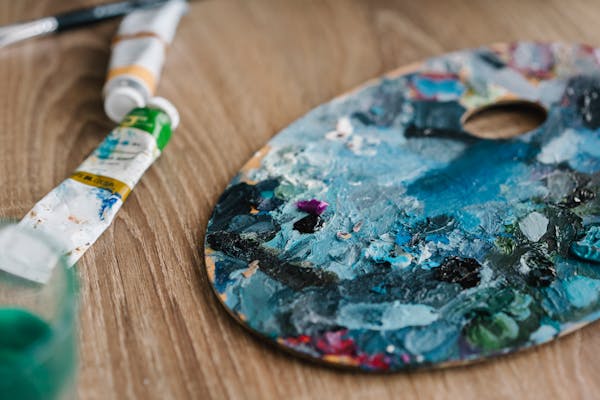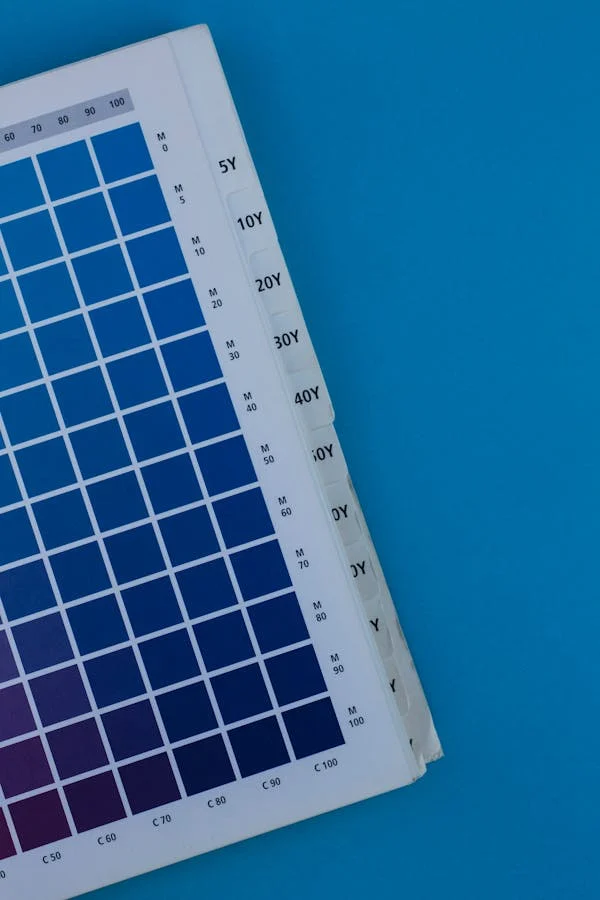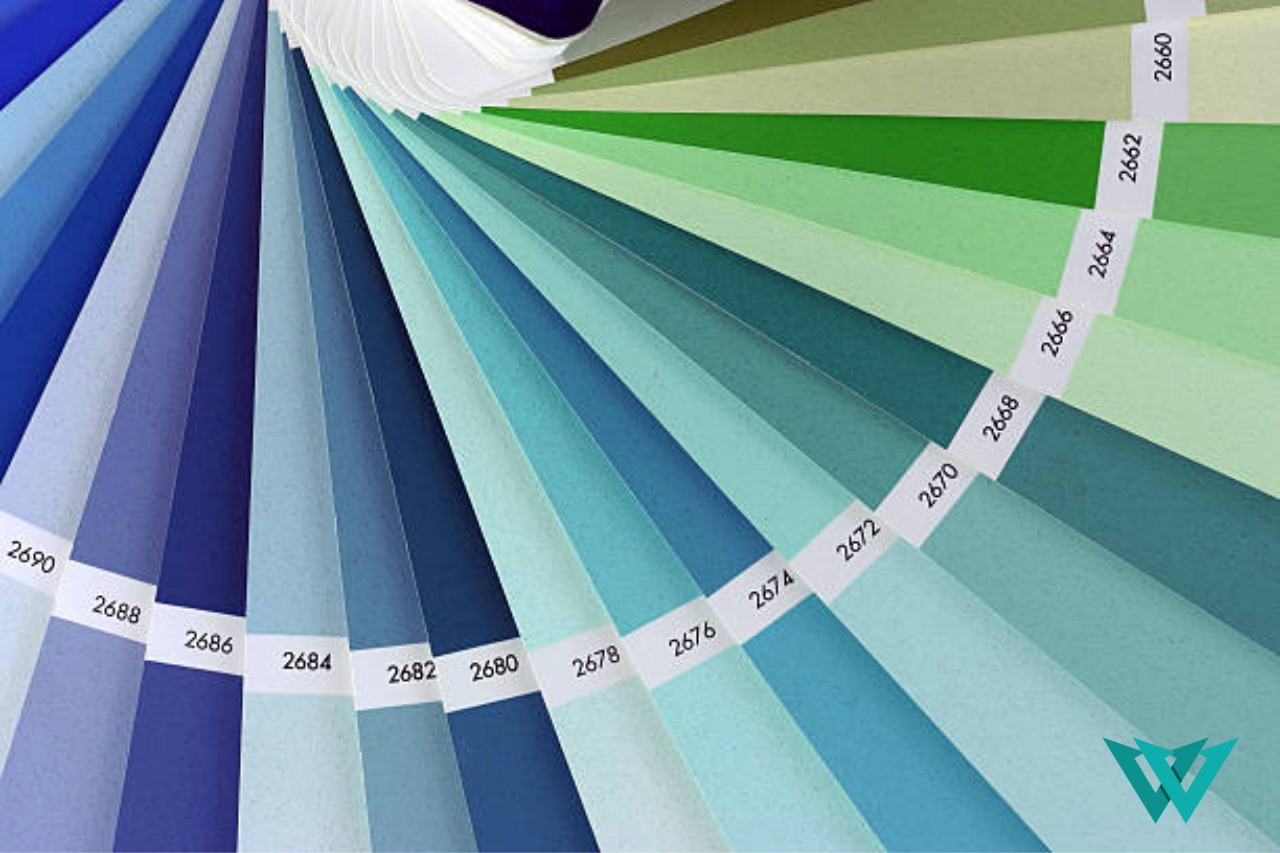Dive into our latest article on Cool Colors in Marketing to discover how incorporating these hues can invigorate your brand’s identity and captivate your audience. Learn five actionable strategies to leverage cool colors effectively in your marketing efforts and elevate your brand’s presence in the competitive landscape.
Understanding the Impact of Cool Colors in Marketing

Cool colors, characterized by their soothing and calming tones, have a profound psychological impact on consumer behavior and brand perception. Blue, green, and purple hues evoke feelings of tranquility, trust, and sophistication, making them invaluable tools in shaping brand identity and messaging. By delving into the psychology behind cool colors, marketers can gain insight into how these shades influence consumer emotions and decisions.
Blue, often associated with stability and reliability, instills a sense of trust and security in consumers. Brands seeking to convey professionalism and dependability often incorporate blue into their logos and marketing materials. Similarly, green symbolizes growth, renewal, and harmony, making it ideal for brands promoting sustainability, health, and wellness. Purple, with its royal connotations, exudes luxury, creativity, and sophistication, appealing to discerning consumers in industries such as beauty, fashion, and technology.
Furthermore, understanding the cultural and contextual significance of cool colors is essential for effective marketing strategies. While blue may evoke feelings of trust in Western cultures, it can symbolize mourning or sadness in other parts of the world. Similarly, green may represent prosperity and luck in some cultures, while signifying jealousy in others. By considering these nuances, marketers can tailor their color choices to resonate with diverse audiences and avoid unintended misinterpretations.
Incorporating cool colors strategically across branding elements such as logos, packaging, and advertisements can enhance brand recognition and recall. Whether aiming to evoke a sense of calmness, inspire trust, or convey sophistication, harnessing the power of cool colors in marketing enables brands to connect with consumers on a deeper emotional level, fostering loyalty and differentiation in an increasingly competitive marketplace.
Crafting a Cool Color Palette for Your Brand

Crafting a cool color palette for your brand is a meticulous process that involves thoughtful consideration of various factors, including your brand identity, target audience, and industry trends. Begin by identifying the core values and personality traits you want your brand to convey. Are you aiming for a calm and serene image, or do you want to evoke a sense of innovation and modernity? Once you have a clear understanding of your brand’s identity, select a primary cool color that best aligns with these attributes. Blue, green, and purple are popular choices due to their versatile nature and psychological associations.
Next, explore complementary colors that harmonize with your primary shade and enhance its impact. Consider the emotions and perceptions you want to evoke in your audience. For example, pairing a soothing blue with a soft gray can create a sense of tranquility and sophistication, perfect for brands in the healthcare or financial sectors. Alternatively, combining vibrant greens with earthy tones can evoke a feeling of vitality and eco-friendliness, ideal for sustainable fashion brands or organic food products.
It’s essential to strike a balance between consistency and flexibility when crafting your color palette. While consistency fosters brand recognition and cohesion across different touchpoints, allowing room for flexibility ensures adaptability to evolving trends and seasonal campaigns. Experiment with various shades and combinations to find the perfect balance that resonates with your target audience while remaining true to your brand’s essence.
Remember, your color palette is more than just a visual element; it’s a powerful tool for communication and storytelling. By thoughtfully crafting a cool color palette that reflects your brand’s values and resonates with your audience, you can create a memorable and impactful brand identity that sets you apart in today’s competitive marketplace.
Incorporating Cool Colors in Visual Content

Incorporating cool colors into your visual content strategy can elevate the aesthetic appeal and effectiveness of your brand’s communication efforts. Cool colors, including shades of blue, green, and purple, possess inherent qualities of tranquility, trust, and sophistication, making them powerful tools for capturing audience attention and eliciting desired emotions. When integrating cool colors into visual content, consider the context and objectives of your messaging. For example, if you’re promoting a wellness retreat or eco-friendly product, opt for soothing greens and blues to convey a sense of serenity and harmony with nature. Similarly, using shades of purple can evoke a feeling of luxury and creativity, ideal for showcasing high-end products or services.
Beyond color selection, pay attention to how you incorporate cool colors into your imagery and design elements. Experiment with different color combinations, contrasts, and gradients to create visual interest and depth. Balance cool colors with warmer tones or neutrals to prevent your visuals from feeling too cold or sterile. Additionally, leverage the psychological effects of color psychology to guide viewer perception and behavior. For instance, using cooler hues in call-to-action buttons or focal points can help evoke a sense of calmness and encourage engagement without overwhelming the viewer.
Furthermore, ensure consistency in your use of cool colors across various visual assets, including social media posts, website design, and marketing materials. Consistency not only reinforces brand identity but also enhances brand recognition and recall among your audience. By strategically incorporating cool colors into your visual content, you can create visually captivating and emotionally resonant experiences that strengthen your brand’s connection with consumers and differentiate your brand in a crowded digital landscape.
Leveraging Cool Colors in Digital Marketing Channels

In today’s digital landscape, leveraging cool colors in your digital marketing strategy can significantly impact the effectiveness of your campaigns. Cool colors, such as shades of blue, green, and purple, possess inherent qualities that evoke feelings of calmness, trust, and sophistication, making them particularly well-suited for online branding and communication. When implementing cool colors in digital marketing channels, consider the specific platform and audience you’re targeting. For instance, on social media platforms like Instagram and Pinterest, where visual content reigns supreme, incorporating cool colors into your posts and graphics can help your content stand out amidst the scrolling feed and capture the attention of users.
In email marketing campaigns, utilizing cool colors in your design elements, such as background colors, buttons, and headers, can enhance readability and convey a sense of professionalism and reliability. Moreover, cool colors can also be effectively utilized in website design to create a visually appealing and user-friendly browsing experience. Whether through subtle accents or dominant color schemes, integrating cool colors into your website can establish a cohesive brand identity and foster a positive impression among visitors.
Additionally, consider the psychological impact of cool colors on consumer behavior and decision-making. By strategically leveraging cool colors in digital marketing materials, you can influence how your audience perceives your brand and engages with your content. For example, incorporating blue hues in call-to-action buttons can instill a sense of trust and encourage click-through rates. Similarly, using green tones in product images or testimonials can convey a message of sustainability and reliability, resonating with environmentally-conscious consumers.
Overall, by harnessing the power of cool colors in digital marketing channels, you can create visually compelling campaigns that resonate with your audience, strengthen brand perception, and drive meaningful engagement and conversions.
Case Studies: Successful Implementation of Cool Colors

Exploring case studies of brands that have effectively utilized cool colors offers valuable insights into the impact of color psychology on consumer behavior and brand perception. One exemplary case study involves a financial institution that rebranded its logo and marketing materials with a calming palette of blues and greens. This strategic shift conveyed a sense of stability and trustworthiness, resonating with consumers seeking reliable financial services in an uncertain market. As a result, the institution experienced increased customer retention rates and improved brand loyalty.
Another compelling example is a beverage company that revamped its packaging design with cool shades of teal and lavender. By embracing these colors associated with refreshment and relaxation, the brand successfully positioned its products as indulgent yet health-conscious alternatives in a competitive market. This strategic use of cool colors not only attracted new customers but also encouraged repeat purchases, leading to significant revenue growth for the company.
In the realm of hospitality, a boutique hotel chain implemented a cool color scheme throughout its branding and interior design, featuring soothing blues and greens inspired by natural landscapes. This cohesive aesthetic created a tranquil atmosphere that appealed to travelers seeking relaxation and rejuvenation during their stay. By immersing guests in a visually harmonious environment, the hotel chain enhanced the overall guest experience and garnered positive reviews and referrals, ultimately driving occupancy rates and profitability.
These case studies demonstrate the power of cool colors to evoke specific emotions and perceptions, ultimately influencing consumer decisions and brand preference. Whether in the finance, beverage, or hospitality industry, strategic implementation of cool colors can effectively communicate brand values, differentiate products or services, and foster lasting connections with target audiences.
Wrapping up:
Harnessing the power of cool colors in your marketing efforts can be a game-changer for empowering your brand and connecting with your audience on a deeper level. By understanding the psychological impact of cool colors and implementing them strategically across various channels, you can evoke desired emotions, strengthen brand identity, and ultimately drive engagement and conversions. From crafting a compelling color palette to leveraging cool colors in visual content and digital marketing channels, the possibilities are endless. Embrace the cool and unlock the full potential of your brand with these five actionable strategies. Start today and watch your brand soar to new heights of success in the dynamic world of marketing.




